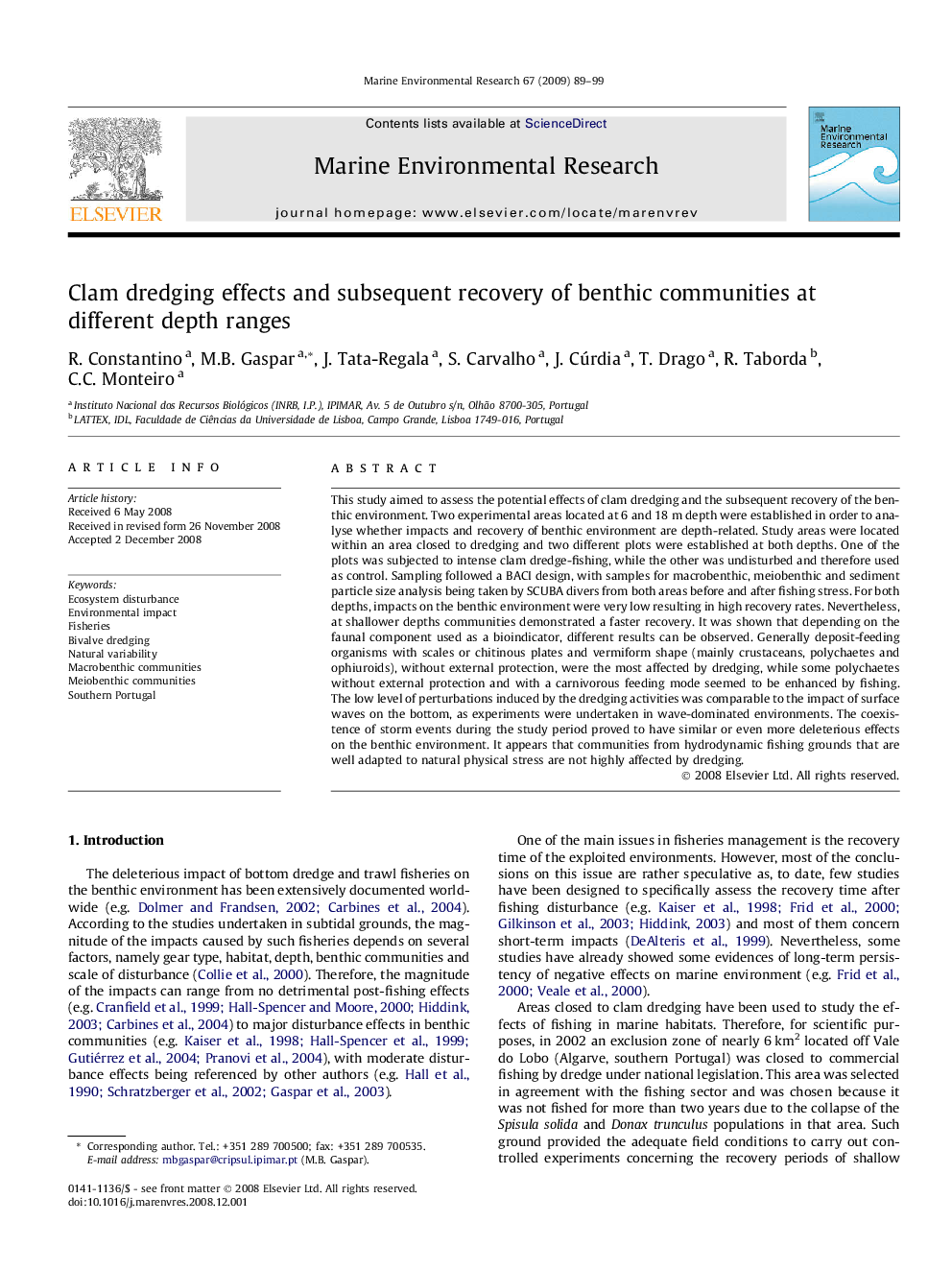| Article ID | Journal | Published Year | Pages | File Type |
|---|---|---|---|---|
| 4551466 | Marine Environmental Research | 2009 | 11 Pages |
This study aimed to assess the potential effects of clam dredging and the subsequent recovery of the benthic environment. Two experimental areas located at 6 and 18 m depth were established in order to analyse whether impacts and recovery of benthic environment are depth-related. Study areas were located within an area closed to dredging and two different plots were established at both depths. One of the plots was subjected to intense clam dredge-fishing, while the other was undisturbed and therefore used as control. Sampling followed a BACI design, with samples for macrobenthic, meiobenthic and sediment particle size analysis being taken by SCUBA divers from both areas before and after fishing stress. For both depths, impacts on the benthic environment were very low resulting in high recovery rates. Nevertheless, at shallower depths communities demonstrated a faster recovery. It was shown that depending on the faunal component used as a bioindicator, different results can be observed. Generally deposit-feeding organisms with scales or chitinous plates and vermiform shape (mainly crustaceans, polychaetes and ophiuroids), without external protection, were the most affected by dredging, while some polychaetes without external protection and with a carnivorous feeding mode seemed to be enhanced by fishing. The low level of perturbations induced by the dredging activities was comparable to the impact of surface waves on the bottom, as experiments were undertaken in wave-dominated environments. The coexistence of storm events during the study period proved to have similar or even more deleterious effects on the benthic environment. It appears that communities from hydrodynamic fishing grounds that are well adapted to natural physical stress are not highly affected by dredging.
